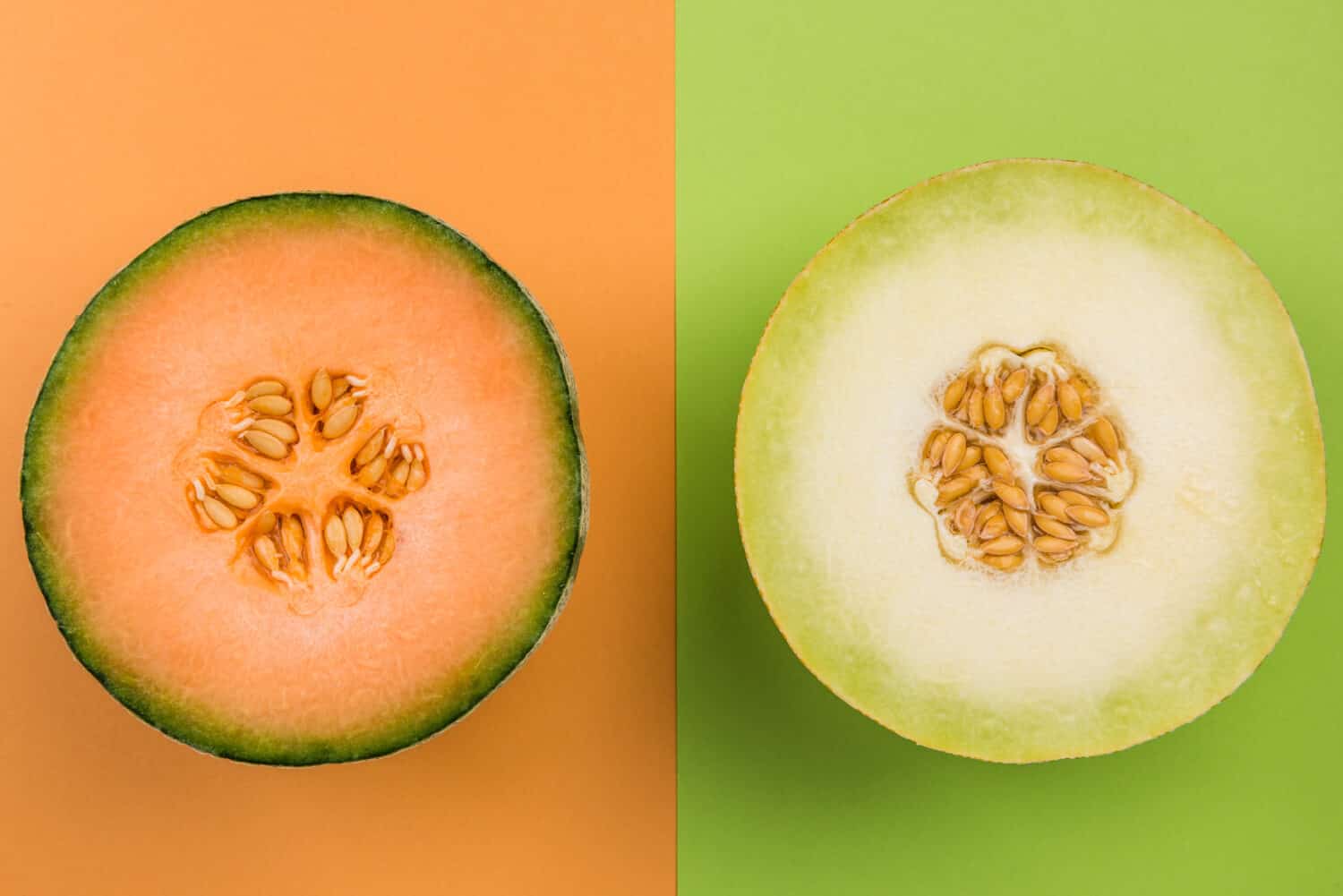When the weather is hot, many look for hydrating foods to beat the heat. And melons are excellent hydrating foods. Watermelon, with its bright green outside and fleshy red insides, is always a big hit in the summer. But watermelon isn't the only melon in town; there is honeydew and cantaloupe too. Honeydew and cantaloupe are in the muskmelon family; both have a sweet-tasting fruit. Although they are similar when it comes to honeydew vs. cantaloupe, there are a few key differences between the two melons, including color, taste, safety, and nutritional differences.
Honeydew vs. Cantaloupe: Key Differences
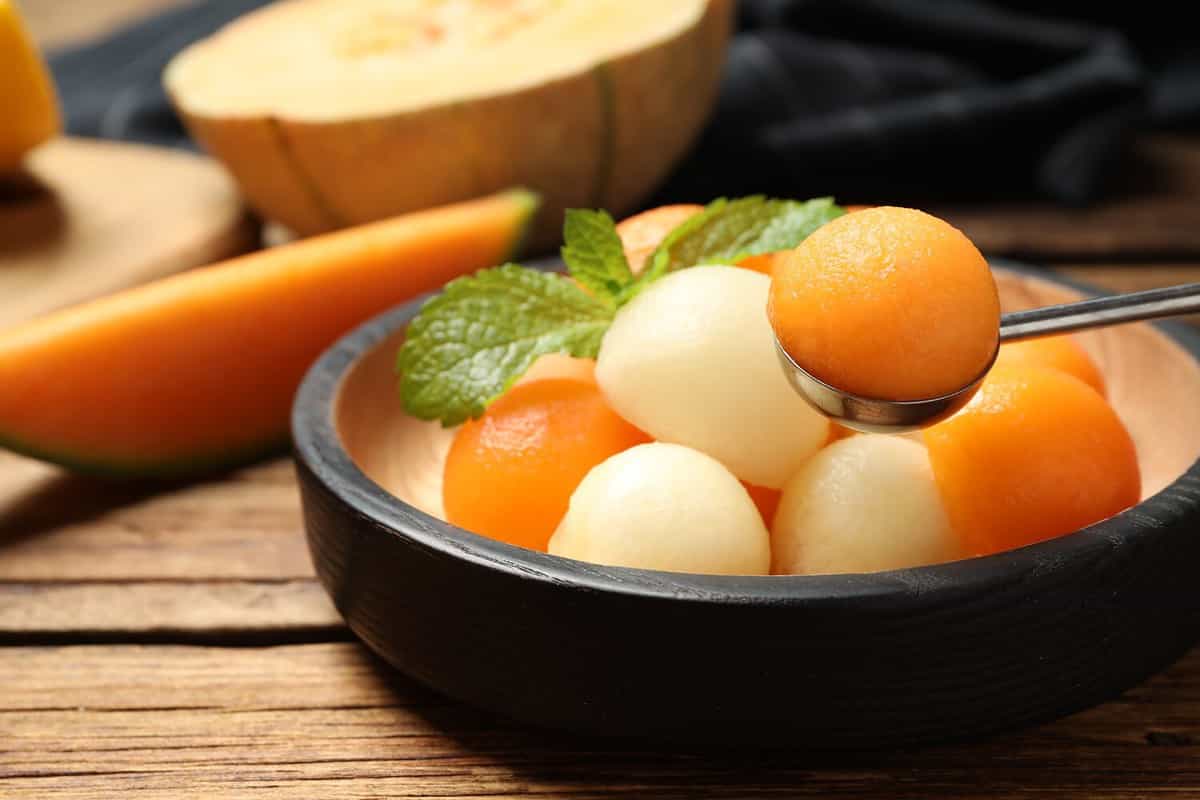
©New Africa/Shutterstock.com
These two refreshing fruits are round, sweet, and filled with seeds. But they do have some distinct differences. Honeydew melons are pale green on the outside with a smooth rind and green inside. In comparison, cantaloupe has a textured outside with bright orange fruit inside. Honeydews are best in late summer, while cantaloupe has a slightly longer season from June to August. Both melons are sweet but have a difference in texture; honeydew is firmer than cantaloupe, which is softer and leans to mushy.
Unfortunately, cantaloupe has a higher risk of bacteria contamination due to its netted rough skin, where bacteria can get into the rind and onto the fruit when it is cut. Because it is high-risk fruit, pregnant women are not recommended to eat cantaloupe, especially pre-cut cantaloupe. In contrast, honeydew has smooth skin that doesn't pose the same bacteria risk and is safe for everyone to enjoy.
Honeydew vs. Cantaloupe: Nutritional Differences
Both melons have the same amount of calories and water content. However, cantaloupe has more Vitamin C and A than honeydew. According to Healthline, cantaloupe has double the amount of vitamin C and 60% more Vitamin A than honeydew. Honeydew is slightly sweeter than cantaloupe and has one gram more of carbs and slightly more sugar.
What is Honeydew?
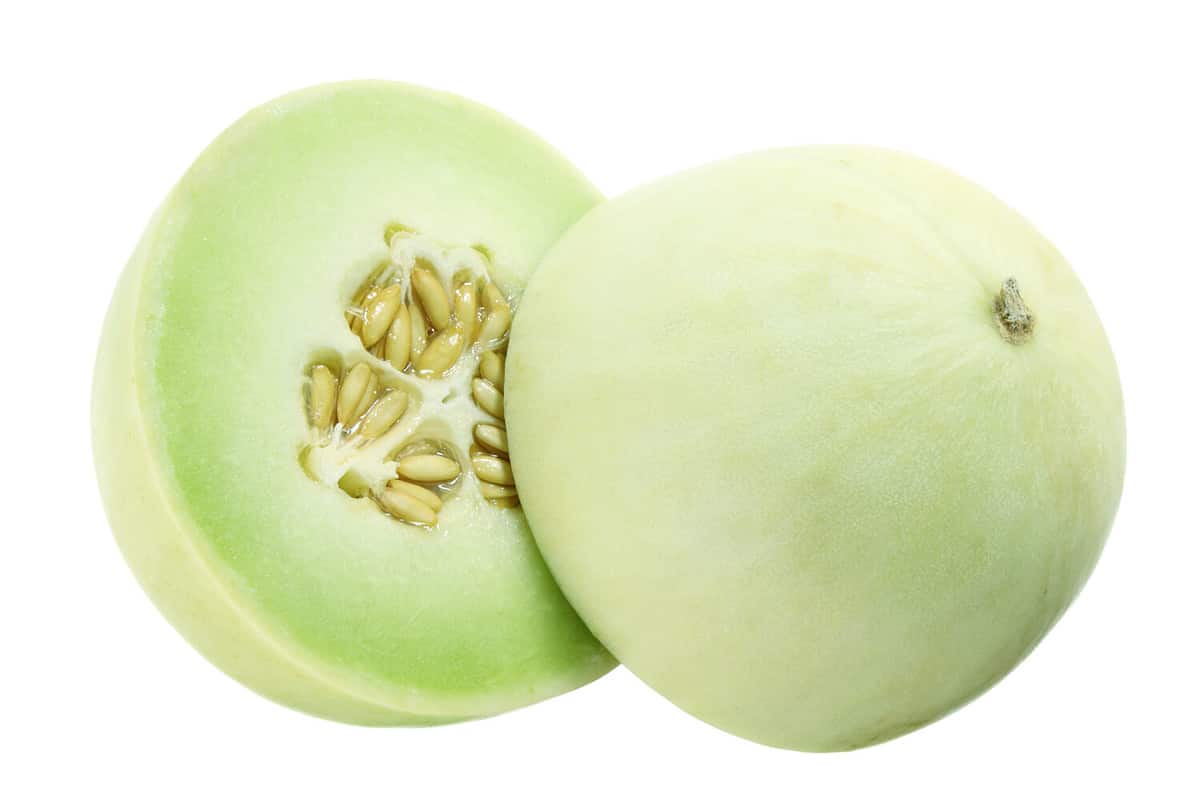
©photosync/Shutterstock.com
Honeydew melon is either round or slightly oval fruit with a green inside. They are full of seeds and have a high water content making them a refreshing, healthy hot weather treat.
The exact origin of the green melon is unknown, but many food historians believe they come from the Middle East or West Asia. There is an early recording in ancient Egypt of the melon from 2400 BCE. Eventually, in the 15th century, honeydew melons made their way to Europe and from there to the rest of the world. Honeydews are grown in hot climates around the globe and in greenhouses in places that do not have the right conditions for the fruit.
What is Cantaloupe?
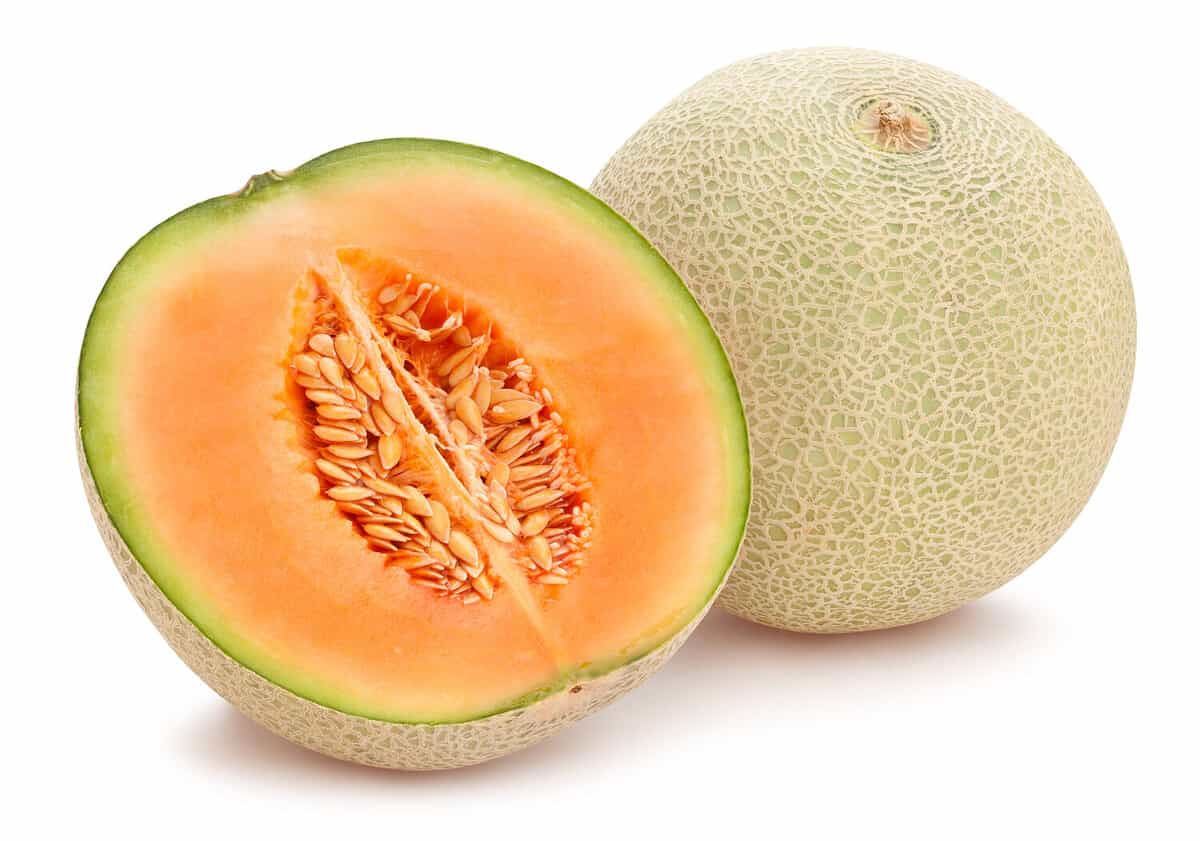
©bergamont/Shutterstock.com
Cantaloupes have a rough netted outside and a soft fruit filled with seeds on the inside. This popular melon is sweetest in the summer when it is at its ripest.
Cantaloupe has been growing along the Nile in Egypt since ancient times, and the Romans ate cantaloupe regularly. Like honeydew, cantaloupe was introduced to Europe and the rest of the world in the 15th century. Its name comes from the Cantalupo region in Italy, where they were widely cultivated in the mid-18th century. Now they are grown all over the world and available all year long, but they are best during the summer when they reach peak sweetness.
Best Ways to Eat Honeydew
Many diners enjoy simple honeydew slices on or in cubes in a fruit salad. Because honeydew is a firm fruit, it keeps its shape when mixed with other fruits. Some popular dishes that feature honeydew are honeydew gazpacho, a cold refreshing soup from Spain. Slivers of honeydew can brighten up a green salad or be mixed with fresh green tomatoes for a sweet, tart dish. Honeydew is also an excellent addition to fruit smoothies or sorbet and can even be used in cocktails like margaritas.
Best Ways to Eat Cantaloupe
Cantaloupe is often eaten raw as a popular summertime treat. But, the versatile fruit can also be added to salads and cheese plates. It is fantastic and in late summer tomato salad. A famous Italian appetizer is thin slices of cantaloupe wrapped in salty prosciutto ham. For a frozen dessert, make cantaloupe ice, sorbets, or ice creams by blending the fruit with other fruits or cream.
Some ways to enjoy both honeydew and cantaloupe are in homemade ice pops. Silicone molds hold the pureed fruit for a healthy summer treat. Kids will love being part of the process of making their own ice pops. Another fun way to mix the two melons is to make a cold melon soup. It makes an elegant appetizer for a warm summer evening.
In Conclusion
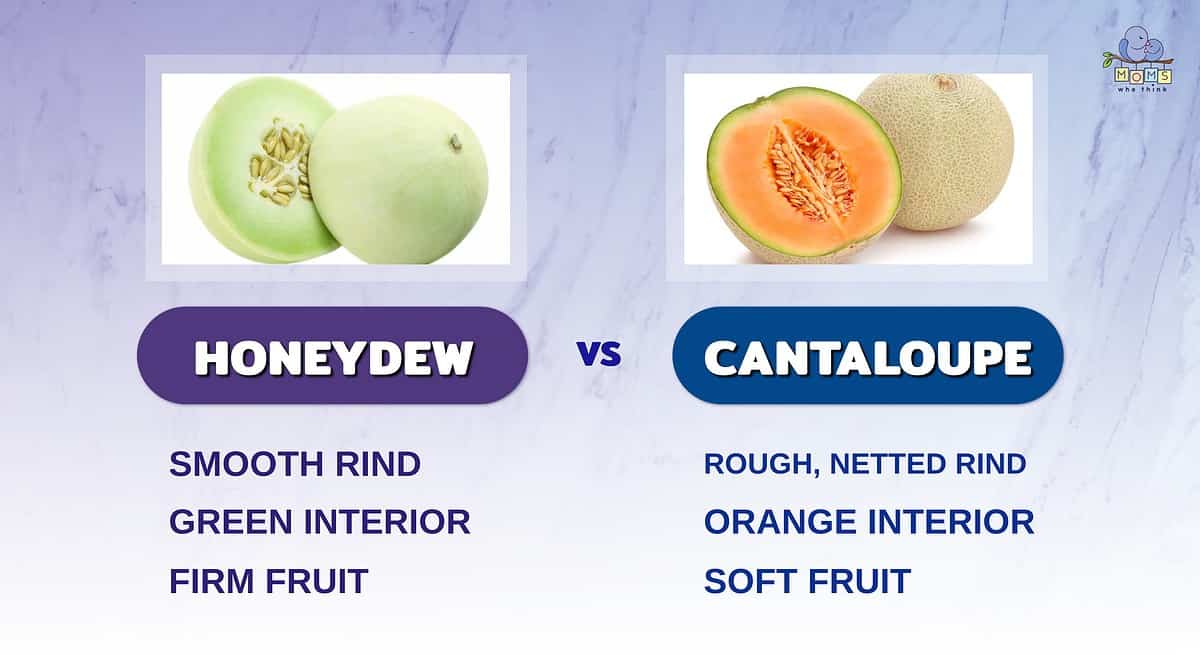
- It's easy to tell these fruits apart based on their rinds. Honeydew has a smooth rind, while cantaloupe has a rough, netted rind.
- The interiors of these fruits are different colors. Honeydew is green on the inside, while cantaloupe is orange on the inside.
- Honeydew is a firm fruit, while cantaloupe is a soft fruit.
You can enjoy these two sweet melons year-round with confidence, knowing you are adding a healthy dose of vitamins to your diet with these two similar but different fruits.
Give this fruit salad recipe a try:
Print
Fruit Salad with Honeydew
Ingredients
- 2 cups fresh seedless grapes, whole or cut depending on size
- 4 cups honeydew
- 4 cups nectarines or peaches, peeled & sliced
- 2 cups fresh blueberries
- 2 cups fresh strawberries
- 2 cups fresh pineapple chunks
- 1 cup sliced kiwi fruit
Instructions
1. Combine all fruits and chill.
2. Serve with a cream cheese dressing, if desired.
The image featured at the top of this post is ©marcin jucha/Shutterstock.com.
